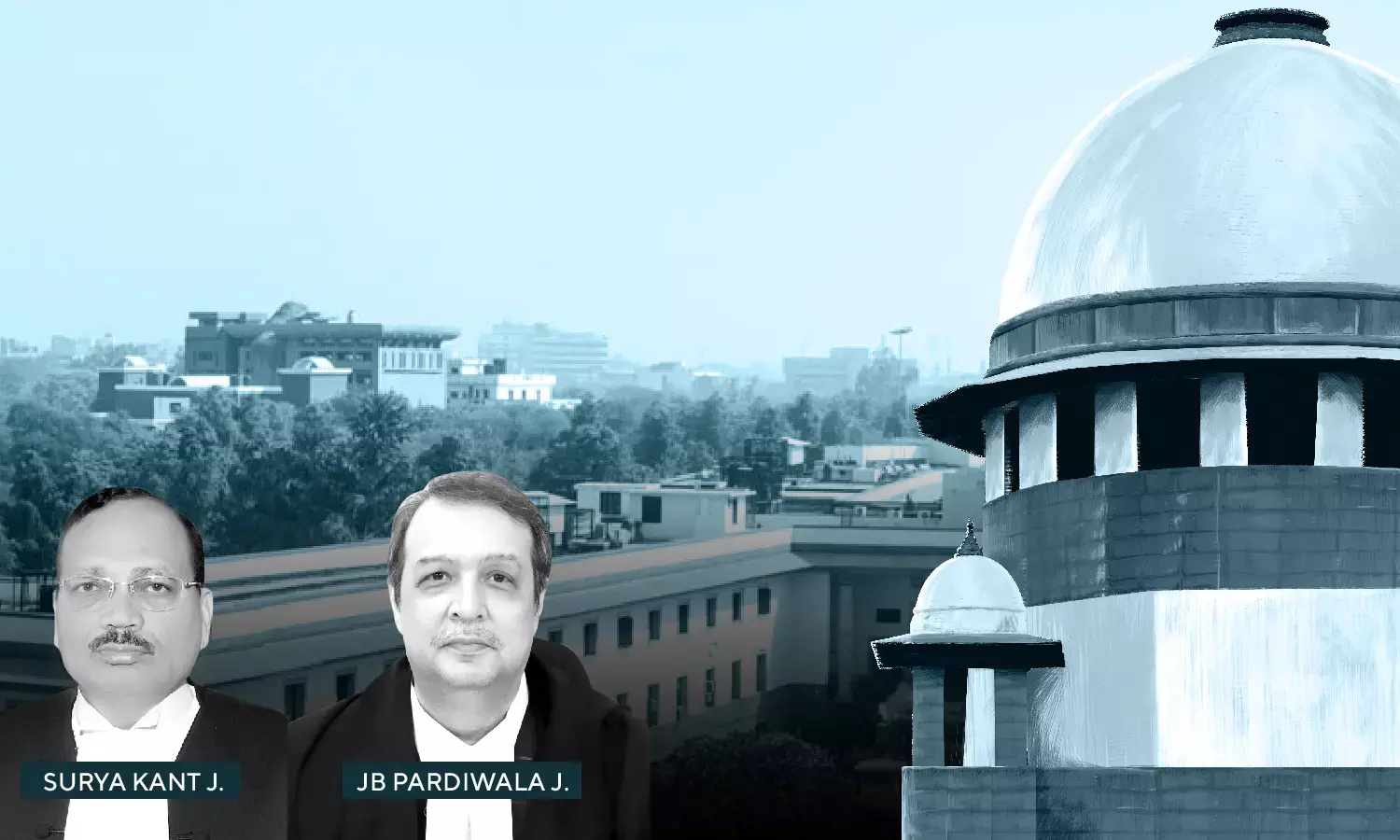Maintaining Predictability In Taxation Law Is Of Utmost Importance- SC While Allowing Revenue's Appeal

A Supreme Court Bench of Justice Surya Kant and Justice JB Pardiwala has observed that "Maintaining predictability in taxation law is of utmost importance", while allowing an appeal by the Revenue department.
The Court has further held that the general principles of Section 4(1) of the Central Excise Act, 1944 (CEA), read with Rule 11 of the CEVR, are meant to provide a pathway for determination of the "normal price" and "value" of goods in cases where no alternative methodology is applicable. This fulfils the dual objectives of being in consonance with the Circular dated 01.07.2002 and harmonizing different provisions of the CEA and Central Excise Valuation (Determination of Price of Excisable Goods) Rules, 2000 (CEVR).
ASG Balbir Singh appeared for the Appellant-Revenue, whereas Counsel S Sunil appeared for the Respondent.
In this case, the CESTAT set aside a show cause notice issued by the Appellant-Revenue to the Assessee-Respondent, on the ground that it had invoked an incorrect method of valuing related party transactions. Consequently, the Appellant-Revenue approached the Supreme Court.
The starting point of the Court's analysis was ascertaining whether the CBEC Circular was binding on the Appellant-Revenue. Towards the same, the Court observed that "If the show cause notice issued by the Revenue is found to be contrary to the Circular, it would prima facie result in abrogation of the uniformity and consistency which is strongly emphasized upon in Ranadey Micronutrients (Supra). It goes without saying that the Revenue's stance against its own circular can potentially lead to a chaotic situation where, with one hand, the Revenue would lay down instructions on how to interpret the relevant statutes and rules, and with the other hand, it would promptly disobey those very directions. Maintaining predictability in taxation law is of utmost importance and, for this reason, the Court should not accept an argument by the Revenue that waters down its own Circular as this would fall squarely within the contours of the prohibition outlined in Paper Products (Supra)."
On perusing Section 4(1) of the CEA and a catena of judgments including SACI Allied Products Ltd., U.P. v. Commissioner of Central Excise, Meerut, the Court made the observation that "the price charged from independent parties for the sale of excusable goods can be used as a benchmark for determination of excise duty on related transactions when such a price is readily available. However, we add the caveat that when making such calculations via transposition, the Revenue cannot act in a mechanical way. The assessment of the appropriate value of the related party transaction must be made after considering relevant material and due application of mind. The entire quasi-judicial process of issuing a show cause notice and considering the distinguishing factors placed by the Assessee must be completed before the price of sales to independent buyers is utilized as a benchmark for sales to related parties. The general principles of Section 4(1) of the CEA, read with Rule 11 of the CEVR, are meant to provide a pathway for determination of the "normal price" and "value" of goods in cases where no alternative methodology is applicable. This fulfils the dual objectives of being in consonance with the Circular dated 01.07.2002 and harmonizing different provisions of the CEA and CEVR."
Subsequently, the Court assumed the position that "the assessable value for the related party sales can be established by referring to the normal price under Section 4(1)(a) of the CEA, which is readily available in the present case."
Therefore, the Court reached the following conclusions:
"(i) Point No. 12 in the Circular of 01.07.2002 is not contrary to the intent of the CEA and CEVR and the object behind it is to merely use "reasonable means" as outlined under Rule 11 of the CEVR, in conformity with Section 4(1)(a) of the CEA and Rule 9 of the CEVR, so as to reach the assessable value of goods for determination of excise duty.
(ii) When the normal price that is ordinarily charged in dealings where the price itself is the sole consideration of the transaction is available, as it is here, that price can be transposed onto the related party purchases as well, to arrive at the assessable value. Hence, the order of the Commissioner regarding the value of the goods sold to the Respondent's sister concerns is in consonance with this Court's earlier judgments and the Circular dated 01.07.2002."
Cause Title: Commissioner of Central Excise & Service Tax, Rohtak vs Merino Panel Product Ltd.

